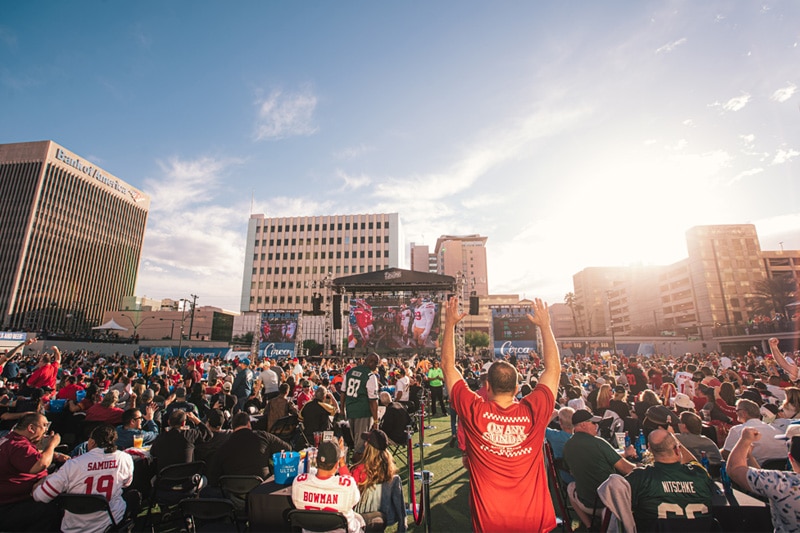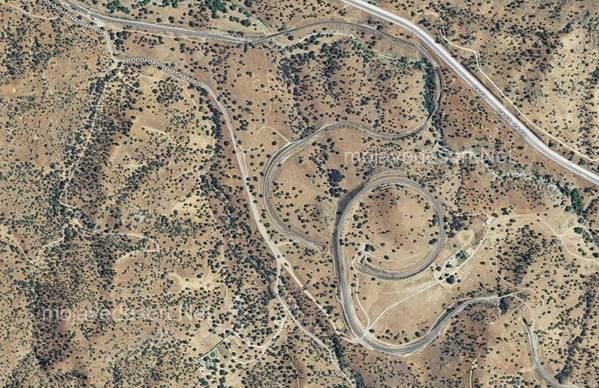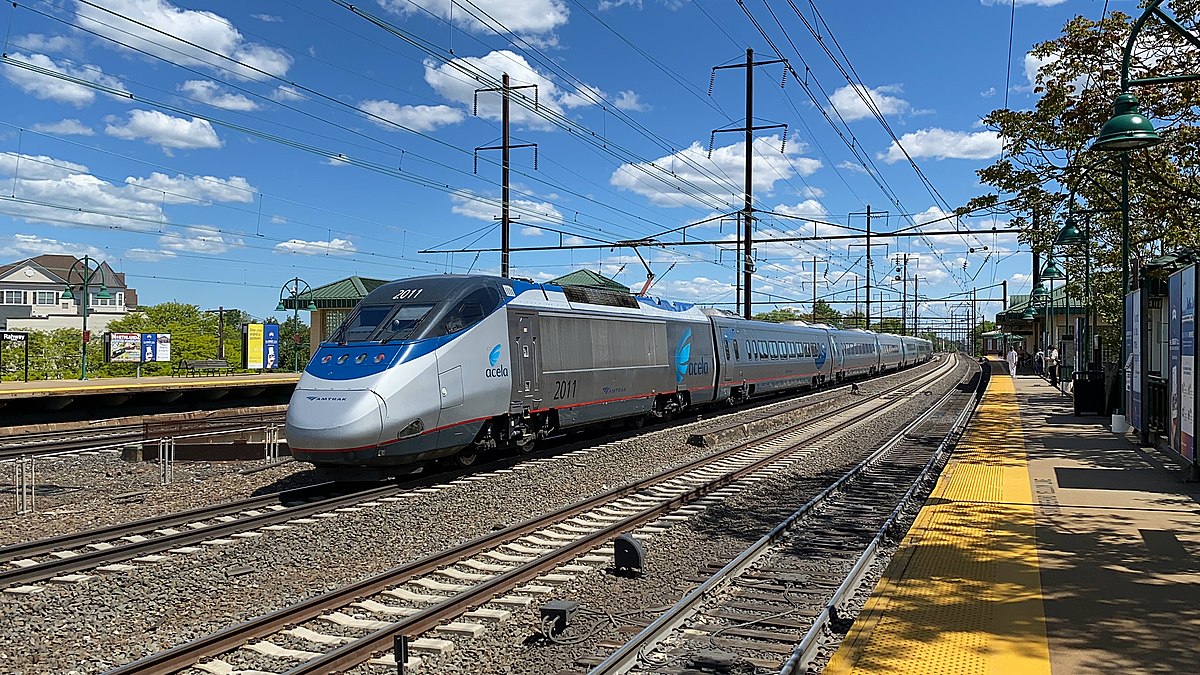AZrailwhale
Diamond Member
The "BosWash Corridor" is the only place where population density and traffic patterns make a high speed rail system profitable. The distances are too short for efficient air travel, and there is a LOT of traffic up and down it. Sacramento to SF is similar due to commuter traffic as most people who work in SF can't afford to live there. But you've got to cross that pesky San Francisco Bay on the Bay Bridge. The old bridge was designed for train traffic, the new one isn't and can only be modified by giving up traffic lanes and even then can only carry light rail like interurban trains. The way they HOPE California High Speed rail will work would be MetroRail from downtown Los Angeles to Palmdale, change trains to high speed rail (after they figure how to get across or under the Tehachapi Mountain Range) or a conventional slow speed rail train to Bakersfield with possibly another train change for the high speed run up the central valley. A train change to BART in Sacramento. then BART to downtown San Francisco. The total time will be far longer than the existing coastal route.Again bullet trains are impossible from the standpoint of moving people. Sure the yare technically feasible but they are logistically impossible because too many rails would need to be built. However if you want to bust your piggy bank go aheadIt wouldn't cost TRILLIONS, first of all, but since you guys like pulling that number out of your asses, why do you never bitch when it's the Pentagon budget ? Or subsidies for nuclear plants that NEVER turn a profit, or when BP or Exxon walk from environmental accountabilty. ?We build a lot of things that aren't needed.
You still haven't explained why we should build something that isn't needed.
The airlines are all in debt...who's subsidizing them ?
Soooo, you want to cause all sorts of environmental destruction, waste trillions of dollars, all because the airlines got fucked over by the government?
Yes, it will.
Now to put it into perspective, the California Bullet Train now under construction has already cost over $100 billion, and is expected to if ever completed cost in the area of $500 billion to just go from LA to San Francisco.
That is half a trillion dollars, for a train to go 400 miles. And not even a "hyperloop", just a bullet train like they have been making for decades.
This is where Elron Musk and his fantasy breaks down. Hell, they just finished for over $50 million a slow moving taxi. Heck, remember when it was first announced? The Internet does not forget.
The Vegas Loop – Quick Facts
- Includes the Las Vegas Convention Center Loop (LVCC Loop)
- Total Current Cost: $52-million
- Travel Speed: 155 mph
- Estimated Capacity: 4,000 passengers per hour
- Completion Date: Unknown, but the LVCC Loop is expected to debut January 2021
- Projected Stops: McCarran International Airport, Allegiant Stadium, Las Vegas Convention Center, Fremont Street Experience, Slotzilla and Garage Mahal at Circa.

How The Boring Company’s Vegas Loop Will Change Downtown Las Vegas
A Las Vegas City Council meeting declared that the Loop would use autonomous Tesla vehicles that will run north under Las Vegas Boulevard.vegasexperience.com
155 miles per hour! 4,000 passengers per hour! The greatest thing ever, that will revolutionize the world! Completely autonomous vehicles!
Uhhh, no. It is taxi drivers going at slow speed in a tunnel, 3 passengers at a time.
This is the problem, you are believing all of the hype without applying logic and reasoning, and at least a healthy dose of skepticism. It will cost a great many trillion dollars, because even after all of the money poured into it, it still does not exist.
It exists as much as the flying wing passenger jets that were promised 60 years ago.
buuuut the train doesn't even go from LA to San Fran, it goes from Lancaster/Palmdale, to Tracy CA. So, 65 miles away from LA. And almost 80 miles from SF. Like I said, from nowhere, TO nowhere.
Actually, they don't even know how to get it to Palmdale.
As I have said many times, I have been watching this for decades. And for the train to get into the LA area, it has to overcome a huge obstacle. And that is traversing the Tehachapi Mountains. There is no way to avoid that, you must go over them. And they still have absolutely no plan on how they are going to do it. In other words, it will never even get past Bakersfield.
In California, there are only 2 ways to take a train from North to South. The one used by passenger trains is the "Coastal Route", which the Surfliner does. It hugs the ocean for most of the trip, never going very far above sea level. That is why the first major transit route followed the old Spanish Trail, then US 101. This is the same route that passenger trains take.
But then, there is still a problem getting from there to the Central Valley. Why do you think I have been mentioning "topography" so damned often? It is not because I like the word, it is because I am really aware of the topography of California, and what exactly that means for trains. No matter what, to get in and out of LA and the San Francisco area you need to cross mountain ranges (most times 2 or more). This can not be avoided, and it is just as much of an engineering challenge today as it was 150 years ago.
Now the Coastal Route is the only way passenger trains take. The other route is the "Tehachapi Loop".

And it is exactly what it sounds and looks like. A long, snaking train route at the summit of the pass so that trains can traverse it. But not passenger trains, they only take it when the coastal route is closed for repairs or maintenance. The max speed of the Loop is 35 miles per hour. And it is heavily traveled by freight trains, so is never used for passenger ones unless there is no other choice.
And from when they first started this project, my main question has always been the same one. "How are they going to take this train into the LA basin?" And over a decade later, there is still no solution. The closest one I heard so far basically involved condemning and destroying most of the city of Tehachapi (including the Hospital and High School), and building it there. Well, obviously that will never happen. And other than that, there is still no plan on how to get it the rest of the way to LA.
Now the part from the Antelope Valley to LA is not that big of a deal really. There is only a single low pass to get through (around Acton), and there is already existing tracks that can be upgraded to support 100 mph trains. Studies been done there long ago, back when the plan was for much of the Metrolink had that as a long term goal. But here is the thing, prior to Moonbeam taking it over, that was what they had been discussing in areas like LA and Sacramento for decades. Not a unified "Bullet Train" system like is normally seen in the world, but selectively upgrading existing lines that could support trains from 100-150 mph with that as demand called for it.
In the 1990's, LA Metrolink released a map of all their proposals, with a timeframe of like 50 years. Mostly trains with a speed of 100 mph, to go to and from selected outlying areas as a way to decrease the congestion that was already a problem. But one line at a time, starting with the ones that had the most ridership, but was already capping out because most were capped at 55-60 mph because of other factors (the trains themselves and the tracks). But never upgrading all of them, just the ones that were showing that they had the demand.
And also as a disaster system. This has been shown in California at least three times in the last 50 years. The 1971, 1989, and 1994 earthquakes devastated parts of that state, and in all three, trains were the only way to get around for months (or years). The I-5/California 14 interchange was completely destroyed twice, and at that time the Palmdale Metrolink route was only a proposal. They had it running within a week, and ridership has only grown over the decades.
But the problem is that people do not understand that the solution does not have to be what some propose, and a huge monolithic single purpose system. It can be done in segments, and not even with the idea of tying them all together into a single system. We sure as hell never built any of our other infrastructure that way, why should it be done this time?
What is a "bullet train"? Do you even know what it is?
I think the biggest problem is that you really have no idea what "High Speed Rail" is.
Here is the amazing thing, as much as you are screaming that it will never work, we have been using it in the US for over 20 years!
The "Acela Express" is the line that runs from Boston to New York, Philadelphia, Baltimore, and DC. Average speed of 150 mph, over 450 miles of track, and carries over 3.5 million passengers per year.
You really have no idea what is even being discussed. I have especially been laughing as for ages you have been screaming it would "never work in the US", completely oblivious it has already been in place for decades.


